ISSN ONLINE(2319-8753)PRINT(2347-6710)
ISSN ONLINE(2319-8753)PRINT(2347-6710)
Pranoti Utekar1, Sayali Naik1, Monika Wadekar1, S.G. Watve2
|
| Related article at Pubmed, Scholar Google |
Visit for more related articles at International Journal of Innovative Research in Science, Engineering and Technology
The main objective of this paper is to perform exterior car washing automatically using two Robotic Arms. The system consists of two robotic arms, one mounted at base of longitudinal wall and other on the ceiling. The car whose surface is to be cleaned is stationed onto a rotating platform. Robotic Arm1 is used for cleaning the sides of the car. It consists of a circular brush at the end of the arm. The arm rotates and captures the wheel base, with rotatory movement of the circular brush it cleans the wheels. The remaining surface is cleaned by a wiper like movement of the arm. Robotic Arm2 is used for cleaning the front and back of the car. It is so programmed that it can travel along the surface to wipe it. Both the arms will work according to the inputs from GUI.
Keywords |
| GUI, IR Sensors, Servo motors, Robotic arms. |
INTRODUCTION |
| There are many types of car washes. Some of them are Hard car wash where the vehicle is washed by employees, Self services car wash where the customer performs the washing. In manual car washing systems requires more labour effects, time consumption and also results may not be satisfactory. In the 21st century, automation has extended its hands in almost all fields. |
| The very simple and easiest way to clean our vehicle is hand washing. The International Carwash Association[1] has conducted tests to determine the effect of car finishes by various car washing systems. According to this research, they proved that hand washes are extremely harmful to automobile finish. It can produce scratches that penetrate as deep as 1/10 of the total thickness of its paint. By the reference of IEEE paper by World Academy Of Science, Engineering and Technology [2] published in 2013 which includes the automatic washing of car using programmable logic controllers (PLC). PLC is absolute technology. Further the research report by International Journal of Innovative Research in Science [3], it performs exterior car washing automatically using PLC integrated with GSM modem. |
| After studying the existing models of car washing system and as we are planning the implementation of the system in India; these are the following some challenges in order to present this paper: |
| 1) Time factor: System should perform the cleaning of vehicle faster. |
| 2) Space factor: The whole system should be compact. |
| 3) Water requirement: The system should use the minimum amount of water. |
RELATED WORK |
| In order to work on all the three aspects discussed above, we studied the existing car washing systems. We met with convention belt system. In convention belt system, the car to be washed is sent over the convention belt in order to carry out all required washing operations. But this will result in large space requirement which is not suitable for implementation in countries like India. Hence, thought of the room like structure with robotic arms mounted on the walls of that room only. For water constraint, we came to systems using proximity sensors to detect car size. But as we are building a prototype version of the system, we have used the IR sensors. We can use IR sensors practically, require that the range of them should be more. |
INTELLIGENT CONTROL OF THE CARWASH SYSTEM |
| We mainly worked on the time and space parameter in our system in order to ensure the implementation of system in compact and in faster way. To successfully overcome a space limitation, we implement the system in a room like structure. It will not require the more space as that of the conveyor belt system which is already there in market. The two arms are mounted inside that room only. One on the longitudinal wall and another on the ceiling. This will reduce the space of the system which is one of the causes of designing the system. As the space required is small, the water required by this system is also less unlike the other mentioned designs. This design saves lots of water. |
| We implemented the system using robotic arms which are like the working hands for the system. Servo motors are like the fingers of these hands. These servos play a vital role in order to control the movements of the arms. Servo motors are much faster than that of stepper. Also servo motor provides us a degree of freedom with the help of which we can easily program the arms according to our requirement. The selection of the servo motors are done by taken into consideration the torque, speed and degree of rotation. Servo motors with 10kg/cm torque are used as base motors of both the arms which should be strong enough to hold the weight of the two servos attached to it and the weight of the cleaning brushes. Servo motors are fast responding in turn the system becomes efficient. Also robotic arm is a recent trend in automation. |
| Another intelligent control in the presented system is the IR sensors. Taken into consideration the water supply in India, we presented the system which cleans the car in very less amount of water. In order to do it, we have used the IR sensors at the roof of the room. Whenever a car enters into the room, the IR sensors detect the size of the car. These IR sensors are interfaced with the water spouts. Hence only that much water spouts will open which are traced or detected by the IR sensors. This will greatly limit the water uses for the system. And one more cause of the system design is achieved. |
AUTOMATIC CAR WASHING SYSTEM |
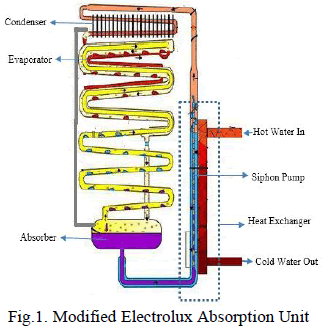 |
| M: DC motor |
| F: Fan |
| S1, S2, S3, S4, S5, S6, S7: Servo Motors |
| Fig.1 shows the block diagram of the Auto Car Washing system. |
| Whenever car arrives to cleaning centre, owner of the car has to select the type of the car and type of wash from the given database on the GUI. GUI sends this information to microcontroller through PC by using USB to UART converter. When the car enters in the room, the IR sensors detect the size of car and that much water spouts will open. GUI (Graphical User Interface) is type of interface that allows user to interact with electronics devices through graphical icons and visual indicators. GUI uses a combination of technologies and devices to provide a platform that the user can interact with, for the task of gathering and producing information. This makes easier for people with few computer skills to work with and use computer software. |
| Two robotic arms mounted on one of the longitudinal wall and another on the ceiling. Robotic arm 1 is used for cleaning the sides of car. It consists of circular brush at the end of it connected to DC motor. This arm performs the wiper motion for normal car washing. In case of special cleaning, this robotic arm 1 bends to particular angle, captures the wheel and then cleans it. Again it will bend and capture another wheel for cleaning. At the same time, Robotic arm 2 which is mounted at ceiling cleans the bonnet and windshield part. After cleaning the one side of the car, the circular base on which the car is situated will rotate by 180° and the cleaning process repeat for this side as well. After the completion of cleaning on both the sides, fans will help to dry the car. The cleaned and dried car then leaves through the same path that it had entered. |
| Considering the design specifications, Microcontroller requires 5V-100mA; Servo motors require 5V-1A for each; DC motor will require 12V-1.5A. Hence we have designed two different power supply for microcontroller and servo motor. DC motor will driven by the DC motor driver IC l293d. There are three servo motors in each robotic arm and one required for base rotation. But one servo driver can accommodate up to 4 servos. Hence we want two supplies for total seven servos. The signal for DC motor is given from the microcontroller. According to the inputs given by customer the microcontroller switches to particular program and servo motors as well as DC motors will move accordingly. |
| Fig 2 shows the flow of the process. The motion of both the arms along with the dc motors is according to the inputs given by the customer, as seen in the GUI. There are different programs which are corresponding to the type of vehicle and type of wash. |
GUI DESIGNING |
| We designed the GUI to make the project user friendly. Fig2 shows the main GUI. This faces to customer as a welcome window. As in fig 2 it takes the inputs from customer as type of car, type of wash and wash duration for which he wants to wash his car. According to the inputs given by customer, the bill amount is displayed on it. Also, the inputs are given to microcontroller with the help of USB to UART converter. Microcontroller will accordingly works. |
| Fig 3 shows the GUI in working condition. When customer gives the inputs the bill amount is displayed on the GUI. As for car type A, wash type C and for 5 cycles (i.e normal washing of big car with 5 cycles) will cost Rs.150. |
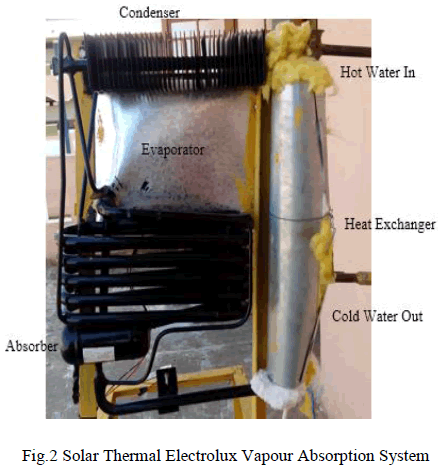 |
| Fig.2 main GUI |
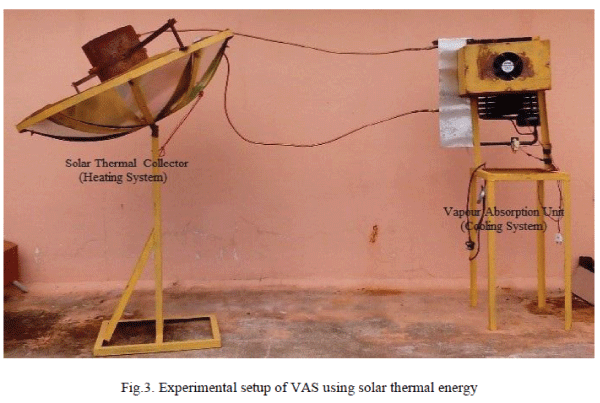 |
| Fig.3 GUI with inputs |
COMPONENTS SPECIFICATION |
 |
| Table.1 Selection of component |
| The selection of servo motors are done according to the weight it has to handled. The portion in which the strength required is more, i.e. the base motor, base motor of side as well as top arm, the servo motor with relatively more torque is used. In remaining we selected the servo motors with less torque as more torque is not needed in that case where we just interested in rotation. |
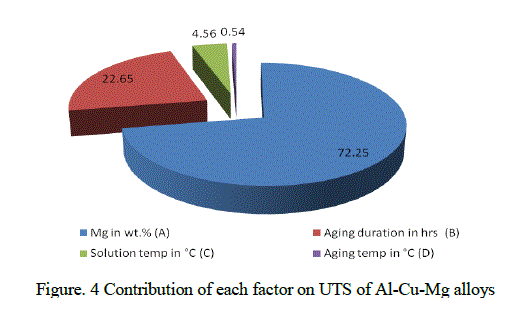 |
| Fig 4. Flow chart |
| Fig. 4 shows the flow chart of the system. It shows the flow of washing process. Flow chart helps to understand the whole project idea. It simply shows the points which will implement step by step to reach the goal. |
RESULTS |
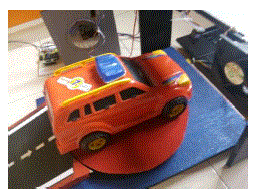 |
| Fig:5 |
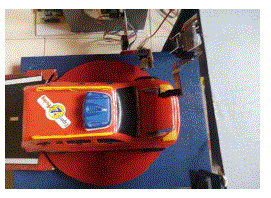 |
| Fig:6 |
| Fig.5 and 6 shows that the setup position of arms and the car. It should be such that the car should be washed cleanly. As discussed the walls on which the arms are mounted, are the part of room. |
CONCLUSION |
| Embedded technology is the current trend. Embedded systems are efficient, reliable and consume less power. Also PLC used in earlier systems is now becoming an obsolete technology. Thus we used robotic arms to design the system. With the addition of robotic arms, system becomes reliable and time efficient which is the need of users. The proposed system proved itself on all three constraints. |
References |
|